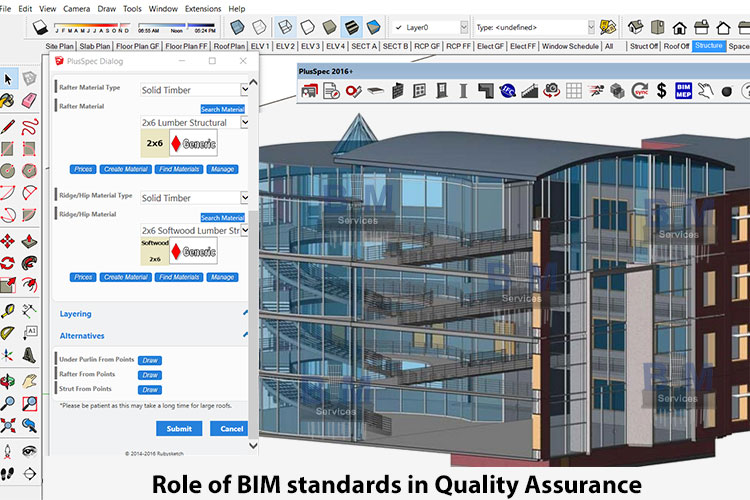Role of BIM standards in Quality Assurance

Overview
To assure the quality of BIM, two methods are used that is Quality Checking and Quality Analysis. Quality Assurance (QA) is a managerial system used in construction companies to ensure delivery of high quality of products to their clients. To assure that quality is maintained; companies hire qualified employees and train them with the required knowledge. Quality Assurance and Quality Control are two interchangeable terms. Quality Checking includes inspecting, checking and confirming that the work or the products made meets the set standards or is correct. Information in BIM must be comparable to some references or requirements for assuring correctness in the information.
While analyzing a BIM Model, the quality checking aspect examines the technical integrity of the model, the content of the model and information verification in the model. A BIM file checks the technical integrity of the model from the authoring tool had produced correctly or not, and the model structure is correct. The information verification contains that BIM file is verified in each design phase to determine that design is precisely made in the model. The content of BIM design and quality is checked which is done by comparing model components in different phases of design, by clash detection or by checking some requirements like fire exists, etc.
Quality is an important factor in construction as it derives delivery of the project on time, cost estimation on the project, the safety of those working on a project, after delivery knowing that the project works as required. Higher quality comes from set standards by the International Organization for Standardization (ISO).
Role of BIM in Quality Standards
BIM in the quality management of the construction project provides quality information to show real structure, height, thickness, material, and its texture. Combing various models from different disciplines for review provides details of building components; quality of material used and controlled procedures in a single BIM Model. Communications between different disciplines function smoothly and streamline the workflow to achieve the desired quality. These communications and interchange of data improves the quality of BIM.
Various managerial methods can apply to measure Quality Assurance and Quality Checking. PDCA (plan-do-check-action) method is used for controlling and continuous improvement of processes and products. It can support validation of quality information in BIM for construction. It works by creating a plan at the base that covers the quality of policies, description of products and standard regulation to be examined. Benchmarks for material specification must be made to know here the used materials and method fulfill the quality requirements. Execution of the plan then comes into the picture along with assessing the results for quality achievement. Feedback must be attained to measure the results against actions made.
The process of QA and QC consists of checking the five levels of BIM that is inventory BIM, spatial BIM, building element BIM (architectural and structural model), system BIM and merged BIM. Inventory BIM and spatial BIM check the names and area of spaces checked to confirm the measurement documents. Observation to check the space do not match with each other along with visual inspection of space is conducted to make identification easy by using different color option for spaces. Elements must be identifiable in building element BIM. Consistency of information, overlapping element check and naming of building elements in building elements BIM is verified. System BIM checks internal clashes from The content of BIM design and quality is checked which is done by comparing model components in different phases of design, by clash detection or by checking some requirements like fire exists, etc. that depicts consistency of naming during modeling to be checked. In Merged BIM, all the disciplines are brought together to check their IFC model compatibility.
Importance of QA and QC in BIM
Using a quality model in construction project helps the construction professionals to save upon a lot of time and money. Errors in design can be resolved in the 3D model than doing any conventional method. Quality models maintain consistency in information sharing, increased level of safety for workers on-site. Quality model in the project ensures that the project is timely delivered as per the schedule and budget margins are maintained. BIM model can be used by facility managers to conduct the survey and analysis on routine checks of building.
There are many benefits of a quality model as it maintains a smooth workflow between design teams. Project design is delivered on time, and less cost is incurred to produce a designed model. Quality BIM Model ensures wastage minimal from correction of model on-site and off-site.
Conclusion
Quality is an essential part of construction companies to deliver it to their clients primarily. Quality is derived from all the stages of preparing the BIM Model, from the design stage to the execution stage of the project. All the other aspects of quality are also considered in mind like delivery of structure of project its cost margin, set standards and checking quality assurance and quality control through different measurements in commencing the project successfully. BIM Coordination Services helps to streamline the information and workflow to attain quality at all stages of construction during a project check.